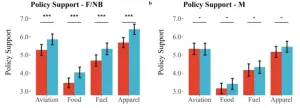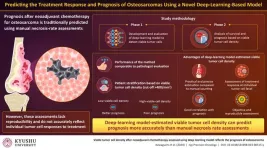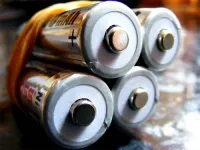(Press-News.org) Individuals with heart disease stand to gain the most from a low-sodium diet but, on average, consume over twice the recommended daily sodium intake, according to a study being presented at the American College of Cardiology’s Annual Scientific Session.
Sodium is an essential nutrient, but consuming too much can raise blood pressure, which damages blood vessels and forces the heart to work harder. Excess sodium can also cause the body to retain fluid, exacerbating conditions like heart failure. The current U.S. Dietary Guidelines put out by the U.S. Department of Agriculture recommends most adults limit their sodium intake to less than 2,300 mg/day, which is equivalent to about 1 teaspoon of table salt. For individuals with cardiovascular diseases, the limit is even lower at 1,500 mg/day, according to guideline recommendations from the ACC and the American Heart Association.
This new study found that among a sample of more than 3,100 people with heart disease, 89% consumed more than the recommended daily maximum of 1,500 mg of sodium and, on average, study participants consumed more than twice this amount. Limiting sodium intake is a fundamental lifestyle modification shown to reduce the likelihood of subsequent major adverse cardiovascular events, researchers said. Their findings underscore the challenges many people face in keeping within recommended sodium limits, regardless of other factors such as socioeconomic status.
“Estimating sodium quantities in a meal can be challenging,” said Elsie Kodjoe, MD, MPH, an internal medicine resident at Piedmont Athens Regional Hospital in Athens, Georgia and the study’s lead author. “Food labels aid in dietary sodium estimation by providing sodium quantities in packaged food. Yet, adhering to a low sodium diet remains challenging even for individuals with cardiovascular disease who have a strong incentive to adhere.”
The study used data from patients diagnosed with a heart attack, stroke, heart failure, coronary artery disease or angina who participated in the National Health and Nutrition Examination Survey (NHANES) between 2009–2018.
Researchers estimated sodium intake based on questionnaires in which participants were asked to report everything they had consumed in 24 hours. According to the results, study participants with cardiovascular disease consumed an average of 3,096 mg of sodium per day, which is slightly lower than the national average of 3,400 mg/day reported by the U.S. Centers for Disease Control and Prevention.
“The relatively small difference in sodium intake suggests that people with cardiovascular disease are not limiting their intake very much compared with the general population and are also consuming more than double what is recommended,” Kodjoe said. “To make it easier for patients to adhere to dietary guidelines, we need to find more practical ways for the general public to estimate dietary sodium levels or perhaps consider a reduction in the sodium content of the food we consume right from the source.”
The researchers also compared sodium intake among people in different socioeconomic groups, but they did not find any significant differences between wealthier and less affluent participants after accounting for age, sex, race and educational attainment.
Individuals can take proactive measures to lower their sodium intake, Kodjoe said. This includes preparing more meals at home where they have greater control over the sodium content and paying close attention to food labels, particularly targeting foods with sodium levels of 140 mg or less per serving. Researchers suggested that better education around the benefits of limiting sodium could also help motivate more people to follow the recommendations.
“Cardiovascular disease is real, and it is the number one cause of morbidity and mortality worldwide according to the World Health Organization,” Kodjoe said. “Adhering to sodium guidelines is one of the easier strategies individuals could readily adopt to reduce hospitalizations, health care costs, morbidity and mortality associated with cardiovascular disease.”
One limitation of the study is that sodium intake was estimated based on food recall questionnaires, rather than 24-hour urine sodium measurements, which is considered the gold standard method. NHANES has included 24-hour urine sodium measurements in its data gathering methods in recent survey cycles, so future studies using this data could provide a more accurate assessment of sodium intake among people with cardiovascular disease.
For more information on reducing sodium, visit CardioSmart.org/Sodium.
Kodjoe will present the study, “The Impact of Income to Poverty Ratio on Sodium Intake Among Adults with Cardiovascular Disease,” on Sunday, April 7, 2024, at 3:15 p.m. ET / 19:15 UTC in Hall B4-5.
ACC.24 will take place April 6-8, 2024, in Atlanta, bringing together cardiologists and cardiovascular specialists from around the world to share the newest discoveries in treatment and prevention. Follow @ACCinTouch, @ACCMediaCenter and #ACC24 for the latest news from the meeting.
The American College of Cardiology (ACC) is the global leader in transforming cardiovascular care and improving heart health for all. As the preeminent source of professional medical education for the entire cardiovascular care team since 1949, ACC credentials cardiovascular professionals in over 140 countries who meet stringent qualifications and leads in the formation of health policy, standards and guidelines. Through its world-renowned family of JACC Journals, NCDR registries, ACC Accreditation Services, global network of Member Sections, CardioSmart patient resources and more, the College is committed to ensuring a world where science, knowledge and innovation optimize patient care and outcomes. Learn more at ACC.org.
###
END
People who use e-cigarettes are significantly more likely to develop heart failure compared with those who have never used them, according to one of the largest prospective studies to date investigating possible links between vaping and heart failure. The findings are being presented at the American College of Cardiology’s Annual Scientific Session.
Heart failure is a condition affecting more than 6 million U.S. adults in which the heart becomes too stiff or too weak to pump blood as effectively as it should. It can often lead to debilitating symptoms and frequent hospitalizations as people age. Electronic nicotine products, which include ...
Is the view from your doorstep mostly trees and sky or buildings and grass? The answer could influence your cardiovascular health, according to a study presented at the American College of Cardiology’s Annual Scientific Session. Using an analysis of Google Street View images powered by machine learning, researchers found people living in surroundings rich in sidewalks, trees and clear sky saw a significantly lower risk of major adverse cardiac events.
“A lot of research has shown that environmental factors strongly affect our health. If we can find a way to stratify this risk and provide interventions before cardiovascular events happen, then ...
Chestnut Hill, Mass (4/2/2024) – Dual topological phases have been discovered in an intrinsic monolayer crystal, a finding that reveals new and unique rule-bending properties in a quantum material, an international team of scientists led by Boston College physicists reported recently in the online version of the journal Nature.
The discovery of a dual topological insulator introduces a new method for creating topological flat minibands through electron interactions, which offer a promising platform for exploring exotic quantum phases and electromagnetism, ...
Brussels, Belgium, and San Francisco, United States - The Public Library of Science (PLOS) and the European Council of Doctoral Candidates and Junior Researchers (“Eurodoc”), today announced a strategic partnership between the organizations to increase awareness of Open Science, its principles, and its implementation into research practices.
“In addition to supporting researchers, we also strive to support the implementation of Open Science principles and increase the adoption of ...
Investments in mitigating climate change in many cases benefit future generations more than those alive today. However, initial costs must be borne by those living now, so many climate mitigation policies rely on some level of intergenerational altruism for support. To investigate the strength and shape of intergenerational altruism, Gustav Agneman and colleagues asked Swedish study participants to engage in an experimental task in which they allocated fictional resources across generations, after being told how many descendants they might be expected to have in the next 250 years. On average, participants allocated most of the resources to the present generation, and fewer and ...
The pursuit of carbon neutrality drives the exploration of clean energy sources, with hydrogen fuel cells emerging as a promising avenue. In these cells, hydrogen undergoes an electrochemical reaction with oxygen to produce electricity and water. Also, the reverse of this process, called electrolysis, can be used to split the abundantly available water to produce hydrogen and oxygen. These two technologies can work in tandem to provide a clean and renewable source of energy. A pivotal element in these two technologies is the platinum (Pt) electrode.
Hydrogen fuel cells consist of two electrodes: an anode and a cathode, with an ...
Fukuoka, Japan - Researchers at Kyushu University have developed and validated a machine-learning model that can accurately evaluate the density of surviving tumor cells after treatment in pathological images of osteosarcoma—the most prevalent malignant bone tumor. The model can assess how individual tumor cells respond to treatment and can predict overall patient prognosis more reliably than conventional methods.
Surgery and chemotherapy have significantly improved the outcomes of patients with localized osteosarcoma. However, patients with advanced metastatic disease (the stage where cancerous cells have spread to distant tissues) have a low survival rate. ...
All-solid-state lithium-ion (Li-ion) batteries with solid electrolytes are non-flammable and have higher energy density and transference numbers than those with liquid electrolytes. They are expected to take a share of the market for conventional liquid electrolyte Li-ion batteries, such as electric vehicles. However, despite these advantages, solid electrolytes have lower Li-ion conductivity and pose challenges in achieving adequate electrode-solid electrolyte contact. While sulfide-based solid electrolytes are conductive, they react with moisture to form toxic hydrogen disulfide. Therefore, there's ...
A new study found that during the pandemic pediatric emergency departments (EDs) saw more children and adolescents who needed a psychiatric admission, as well as an increase in severe conditions, such as bipolar disorder, schizophrenia and substance use disorders. The higher demand for a psychiatric inpatient bed often exceeded availability, resulting in over 12-hour stays in the ED awaiting admission for nearly 20 percent of children with mental health emergencies in 2022, up from 7 percent before the pandemic. Findings were published in Academic Emergency Medicine.
“Our data shows that pediatric emergency departments saw more severe mental health presentations during the pandemic, ...
We’ve all been there: staring at a math test with a problem that seems impossible to solve. What if finding the solution to a problem took almost a century? For mathematicians who dabble in Ramsey theory, this is very much the case. In fact, little progress had been made in solving Ramsey problems since the 1930s.
Now, University of California San Diego researchers Jacques Verstraete and Sam Mattheus have found the answer to r(4,t), a longstanding Ramsey problem that has perplexed ...





